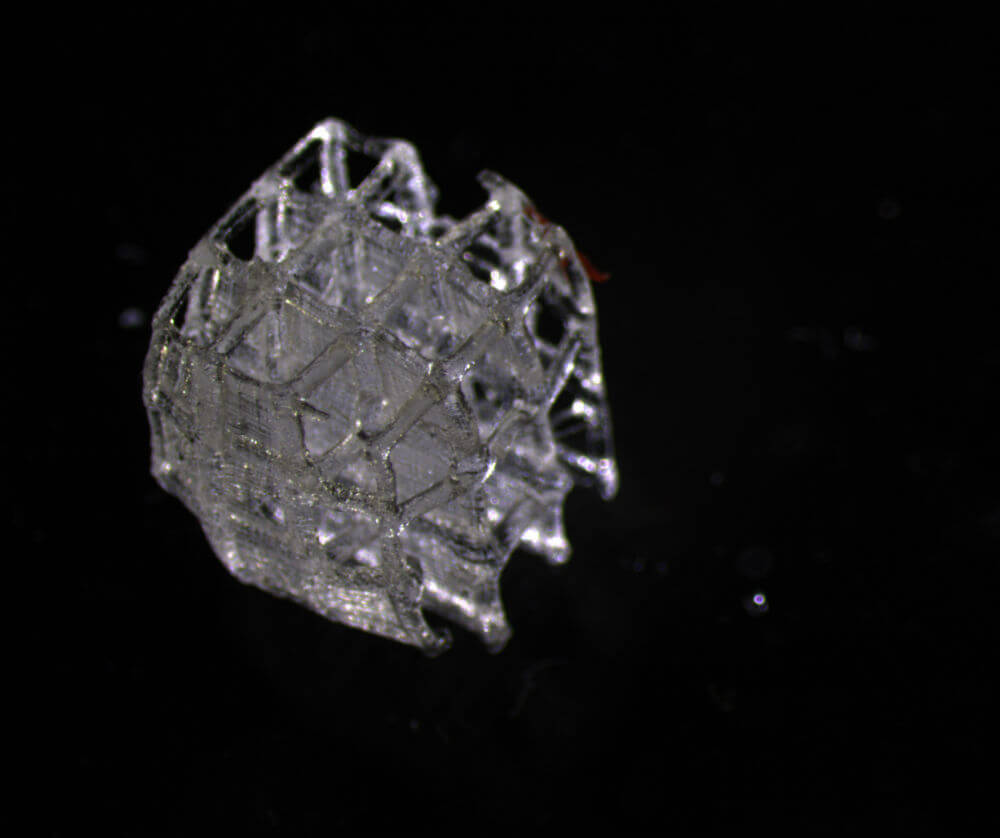Holographic Printing in Seconds

Latest News
January 11, 2018
Tired of waiting hours for your 3D design to finish printing? A new holographic printing approach could create objects in just a few seconds.
Lawrence Livermore National Laboratory scientists have developed a way to use lasers and a fast-drying photosensitive resin to create several layers of each print simultaneously.

The researchers published a report on their work in Science Advances.
The system uses three weak lasers to avoid curing the resin during the print process. The printer follows a pattern from a 3D laser model and forms the object inside a tank full of the liquid resin. At points where the three lasers join together in a stronger beam, the resin hardens.
Once the pattern is finished printing, the lasers can harden the resin in a few seconds. The unused resin is drained from the tank.
A similar process ca n be used to create metal objects with a tank full of powder that is solidified using a laser or electron beam.
n be used to create metal objects with a tank full of powder that is solidified using a laser or electron beam.
“The fact that you can do fully 3D parts all in one step really does overcome an important problem in additive manufacturing,” said Maxim Shusteff, who led the study.
The technique is fast and eliminates the need for structural supports in the printing process. It can be used to form complex objects with moving parts, and can print multiple objects at once.
According to Shusteff, future iterations of the technology may use LEDs in order to reduce costs and avoid “laser speckle” defects in the printed objects. The team has made some shapes on the millimeter scale, but the amount of power needed would make the system impractical for commercial deployment right now.
Possible applications could include the production of biomedical implants or bioprinting living tissue.
“We’ve taken a really good first shot at this,” Shusteff said, “but we’ve not yet taken it to the limit of its performance, so the space is wide open for us and others to demonstrate what this approach is capable of.”
A start-up called Daqri created a similar system that projects holograms into a light-activated monomer.
Source: Science Advances, Big Think
Subscribe to our FREE magazine, FREE email newsletters or both!
Latest News
About the Author
Brian Albright is the editorial director of Digital Engineering. Contact him at [email protected].
Follow DE





